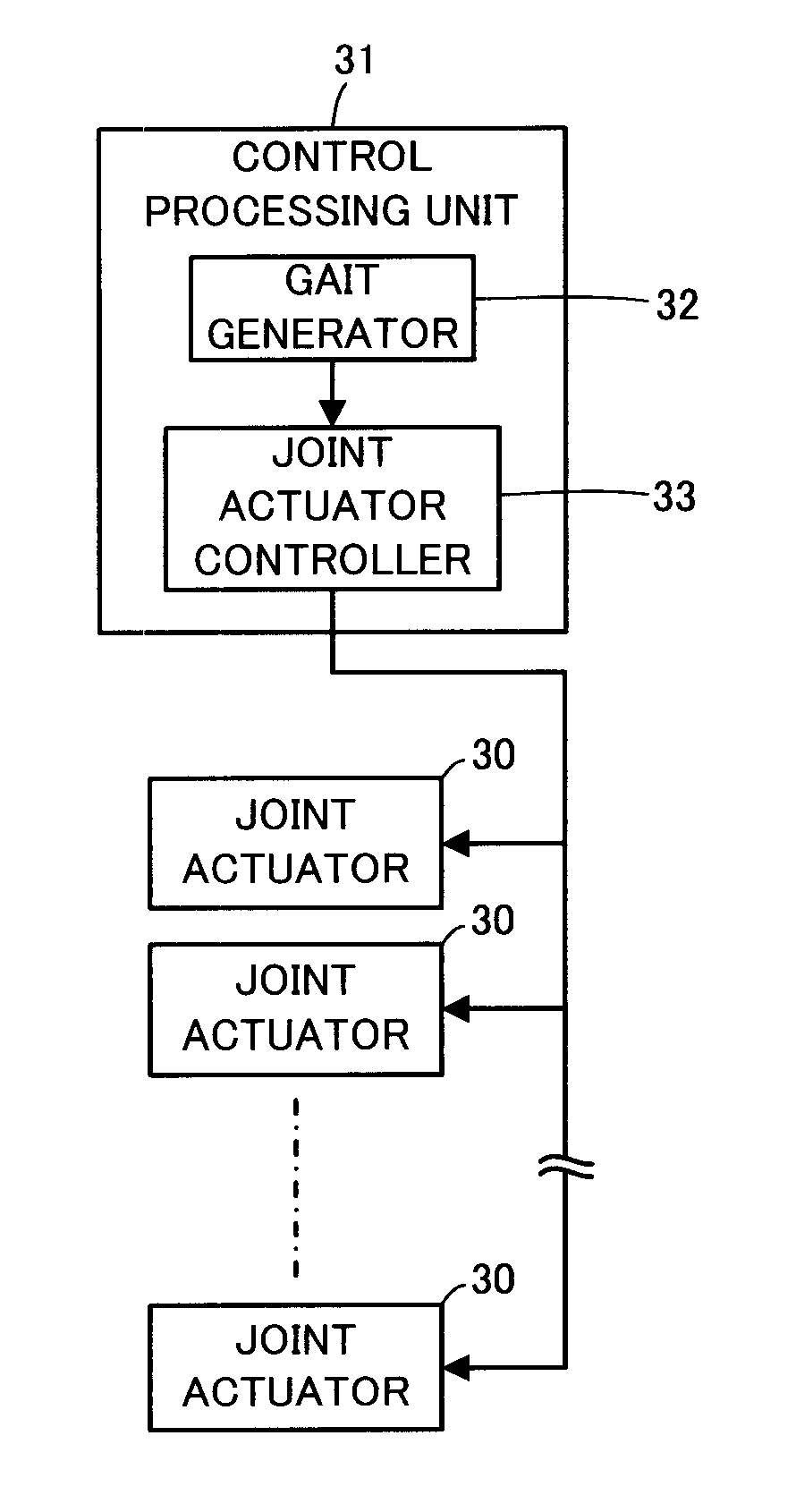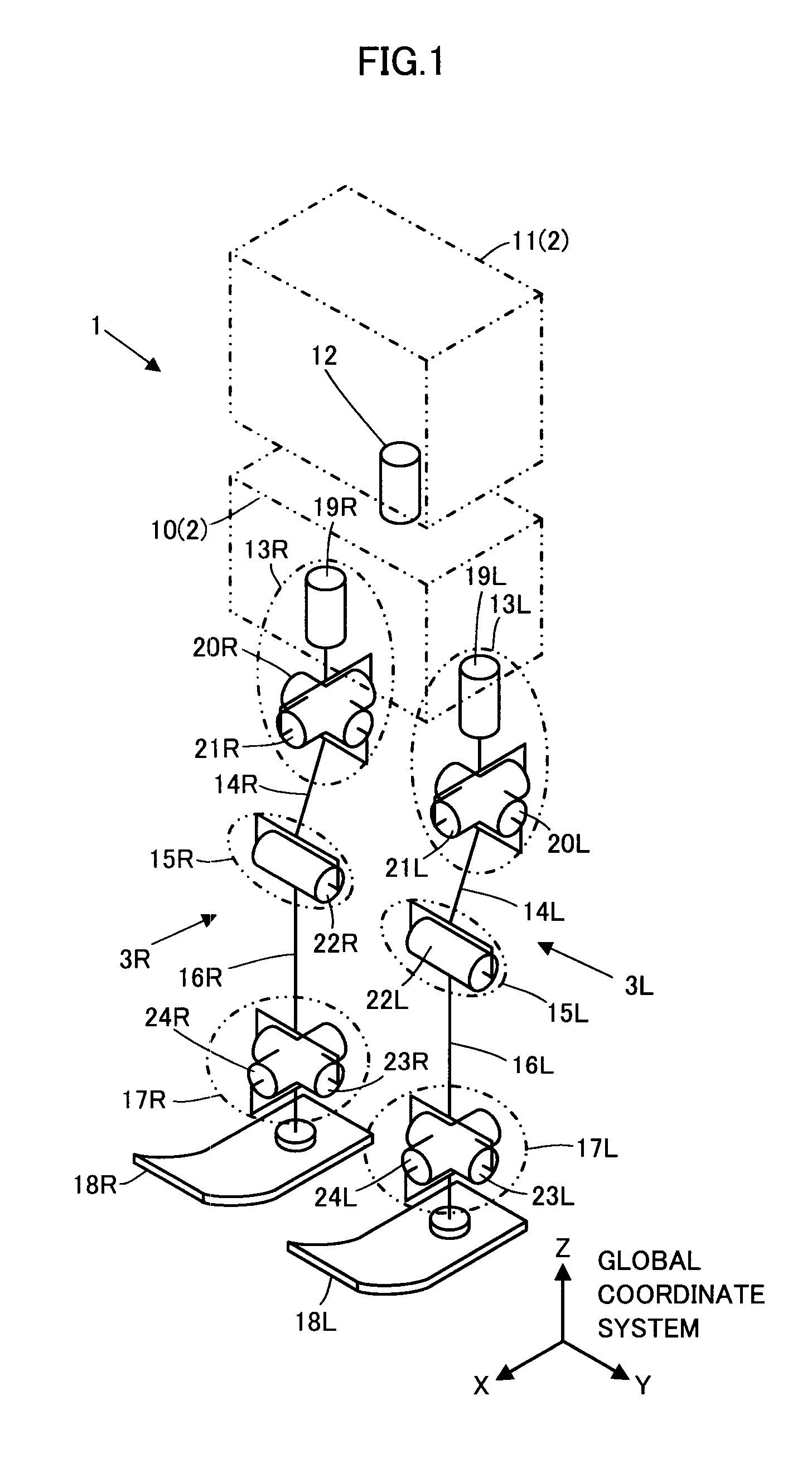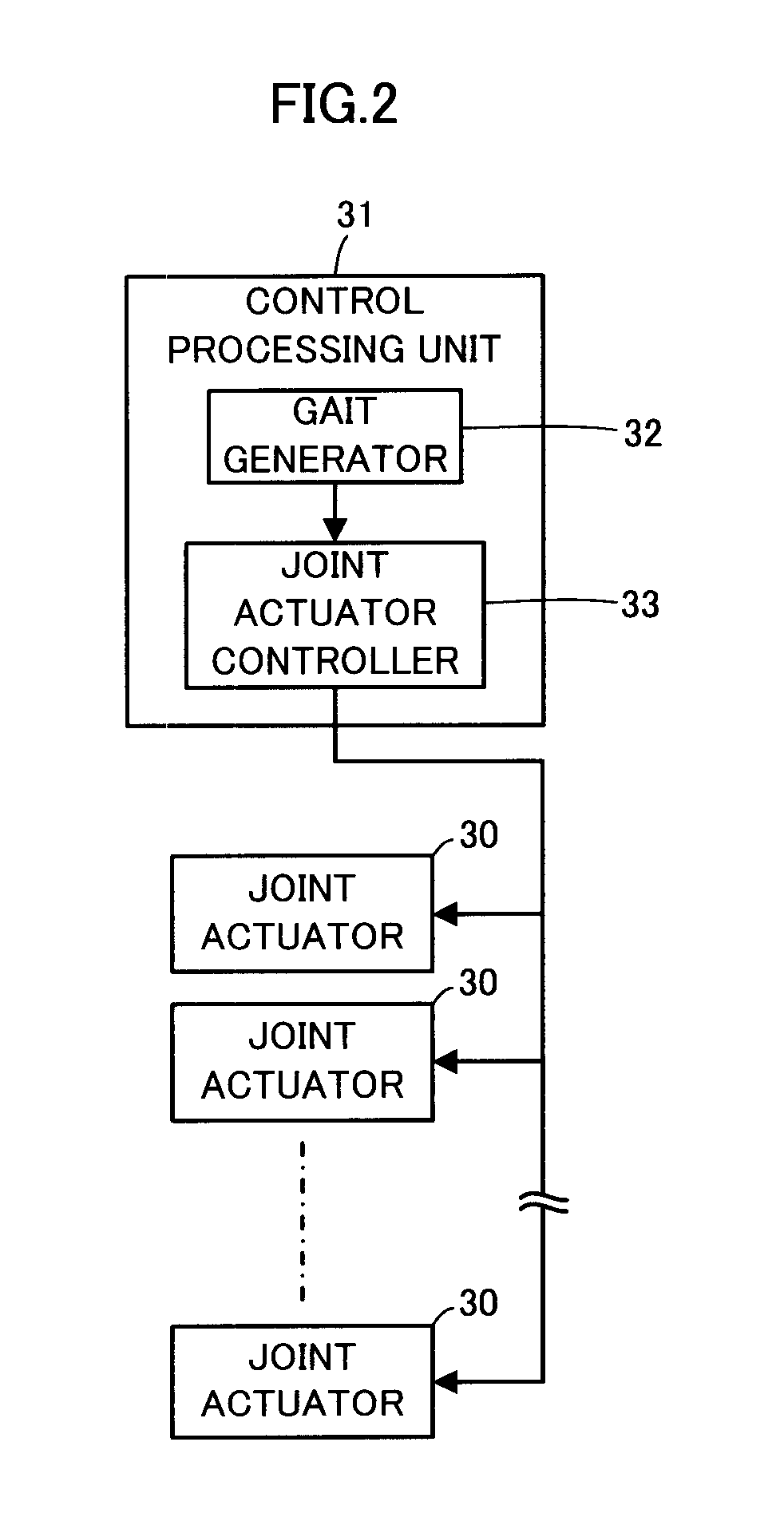Gait generating device for legged mobile robot and operational target generating device for robot
a technology of generating device and robot, which is applied in the direction of computer control, program control, instruments, etc., can solve the problems of operating target impairing the smooth operation of the robot, and achieve the effect of preventing the displacement amount of the join
- Summary
- Abstract
- Description
- Claims
- Application Information
AI Technical Summary
Benefits of technology
Problems solved by technology
Method used
Image
Examples
first embodiment
[0112]An embodiment of the present invention will be described below with reference to FIGS. 1 to 6.
[0113]FIG. 1 is a schematic diagram illustrating the general construction of a legged mobile robot given as an example in the present embodiment. This legged mobile robot 1 (hereinafter, referred to simply as the robot 1) is a bipedal mobile robot which has a body 2 and a pair of right and left leg links 3R and 3L extended from the body 2.
[0114]In the present specification, a reference character “R” will be added to the reference characters indicating the members on the right side of the robot 1 facing forward or to the variables indicating the amounts related to those members, and a reference character “L” will be added to the reference characters indicating the members on the left side of the robot 1 facing forward or to the variables indicating the amounts related to those members. The reference characters “R” and “L”, however, may be omitted when it is not particularly necessary t...
second embodiment
[0351]A second embodiment of the present invention will now be described with reference to FIG. 12. The second embodiment is different from the above-described first embodiment only in part of the processing in the desired body motion velocity value determiner 45. Therefore, in the description of the present embodiment, the differences from the first embodiment will be described primarily; the description of the same features as in the first embodiment will not be repeated.
[0352]The present embodiment differs from the first embodiment only in the processing of determining ↑ωleg_i_min and ↑ωleg_i_max in the aforesaid linear matrix inequalities (10a) and (10b).
[0353]More specifically, in the present embodiment, the desired body motion velocity value determiner 45 determines the components of ↑ωleg_i_min and ↑ωleg_i_max for a leg link 3—i (3R or 3L), i.e. the upper and lower limits of the joint velocity of each joint of the leg link 3—i, in accordance with the displacement amount θ of ...
PUM
 Login to View More
Login to View More Abstract
Description
Claims
Application Information
 Login to View More
Login to View More - R&D
- Intellectual Property
- Life Sciences
- Materials
- Tech Scout
- Unparalleled Data Quality
- Higher Quality Content
- 60% Fewer Hallucinations
Browse by: Latest US Patents, China's latest patents, Technical Efficacy Thesaurus, Application Domain, Technology Topic, Popular Technical Reports.
© 2025 PatSnap. All rights reserved.Legal|Privacy policy|Modern Slavery Act Transparency Statement|Sitemap|About US| Contact US: help@patsnap.com



